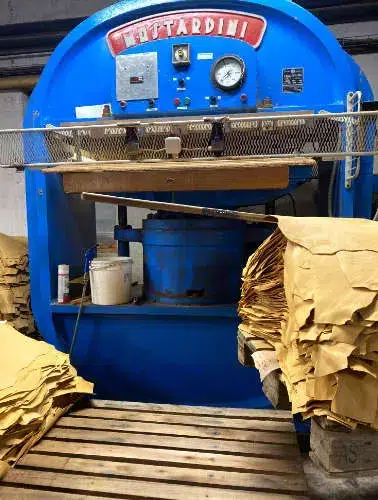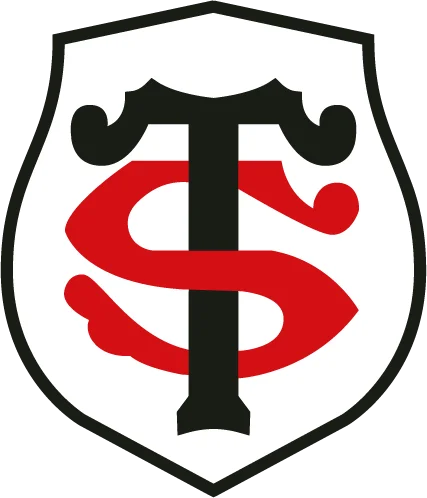Vegetable Tanning Of Leather
To manufacture our entire range of club armchairs and sofas, we work with a renowned megissier based in the Tarn region of France. Founded in 1898, this French Family firm perpetuates a century of precious craftsmanship. Its speciality? Vegetable tanning of leather. Quality, respect for the environment and a love of a job well done are at the heart of their approach. More than a philosophy, it’s a leitmotiv that shapes their working methods. The excellence of their products has earned them a reputation for excellence all over the world. Far from getting bogged down in archaic processes, they work with research and development laboratories to develop new products and manufacturing techniques. We invite you to discover their workshop and the different stages in the tanning of hides.
What is leather tanning?
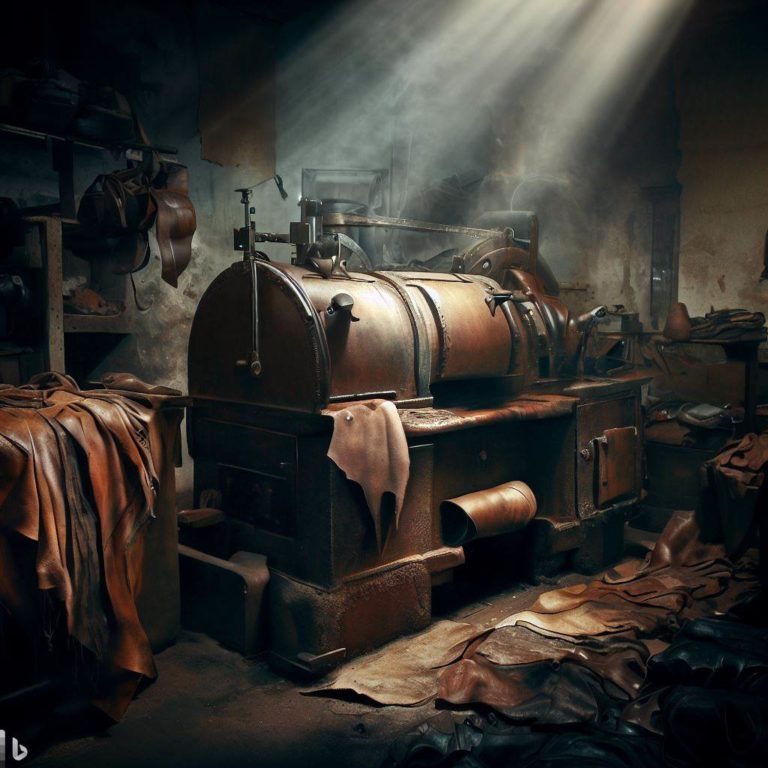
Before the tanner or megissier intervened, leather was not yet called leather, but simply an animal hide. It is a raw material that has not been treated. At this stage, it retains hairs, organic residues and impurities. It is particularly prone to putrefaction.
Unless something is done quickly to stop this natural process, bacteria and fungi will have a field day, doing what they always do: devouring the material and decomposing it. Fortunately, human beings have for centuries found a solution for treating, purifying and stabilising hides: it’s called tanning. This process transforms the animal hide into solid, rot-proof and water-resistant leather.
What is the difference between a tanner and a megissier?
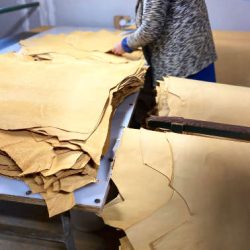
In practice, their job is the same. They convert hides into leather to make them soft, strong and durable. The only difference lies in the nature and size of the hides they work with. The tanner works only with large hides. He will work with the skins of calves, buffalo, cows, horses, bulls and bullocks. This type of hide is frequently used in the furniture, car upholstery and marine industries.
The megissier prepares the skins of small animals. He masters the art of transforming the skins of sheep, lambs, goats or exotic animals such as ostrich, snake or fish. This variety of leather is commonly used in clothing, leather goods, glove-making and design. Because of the nature and size of the hides they treat, some of the processes and tools used by the tanner and the megissier differ. But basically, their work remains the same: transforming a raw, perishable animal hide into usable leather.
The two types of tanning
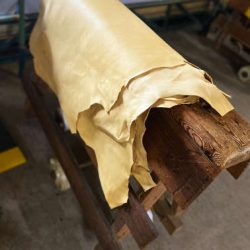
Both tanners and megissiers use tannins to change the nature of the hides. These are substances with astringent properties that make the leather rot-proof. Using specific methods, they will make the leather more or less soft or firm. Everything depends on the customer’s wishes and the way in which the future leather will be used. There are two different techniques: vegetable tanning and mineral tanning.
Vegetable tanning
This age-old process uses tannins derived from plants. These substances are found in tree bark (oak, chestnut, mimosa, acacia, etc.), leaves, seeds, roots or plant sap. This is one of the oldest ways of working leather. In fact, vegetable tanning was the first method used by our prehistoric ancestors to tan hides. When man lost his precious hair and the winters became harsher, he quickly realised the benefits of transforming the skins of the animals he killed. Leather became essential for survival. It was used for clothing, footwear and building habitats to protect against the elements. Unfortunately, this type of traditional tanning is becoming increasingly rare.
Mineral tanning
This type of tanning uses mineral tannins: chromium salts, iron salts, zirconium salts, etc. This widespread technique is cheaper and quicker than vegetable tanning. It is also increasingly criticised. The chemicals used are particularly polluting and allergenic. What the industry gains in productivity and yield, society loses by compromising its health and the environment.
The advantages of vegetable tanning
A healthy process for the user and the tanner
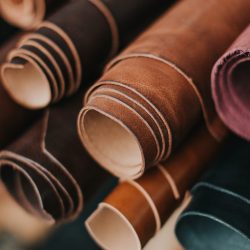
Vegetable tanning uses no chemical compounds. It is safe, both for the tanner who comes into contact with the hides and for the customer who uses the leather. What’s more, it poses no risk of allergies, making it a particularly healthy end product. As the tannins come from abundant plant resources, this type of tanning is more respectful of the Earth and its treasures. The waste produced by this technique is completely harmless. For all these reasons, vegetable-tanned leather is considered to be “eco-friendly“.
As well as being a natural method, vegetable tanning produces leather that is particularly healthy and strong. It absorbs excess moisture and releases heat in cold weather and coolness in hot weather. This is what we call a “natural thermoregulator”. Leather of this type has excellent durability and the advantage of ageing well. In fact, it will continue to improve over the years thanks to the spontaneous development of a patina. From an aesthetic point of view, leather treated with vegetable tanning has a rich tint with deep and nuanced colours. What’s more, it has a delicate pearly sheen that makes it unique and authentic.
Preparatory work before vegetable tanning
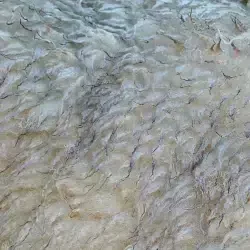
Obtaining a finished leather is a long process divided into numerous phases. It’s an ancient skill that today relies on modern, optimised techniques and processes. Before proceeding with the actual tanning, there are two important stages: working the hide and the so-called “river work”.
The skinning process
This stage involves carefully separating the skin from the animal’s carcass using special tools. This stage is known as “fresh skin”. They are particularly fragile and perishable, so it is crucial to prepare them quickly. 75% of the weight of these skins is water. Without human intervention, they will deteriorate in just a few hours. The cause? The development of microbes and bacteria that hasten to colonise it. To halt their action and prevent the material from deteriorating, the skin needs to be dehydrated.
Salting, a stage that dries and preserves
The skins are quickly wrapped in a thick layer of salt. They are then stacked on top of each other. Brine flows from the piles. Thanks to its corrosive power, it eliminates some of the waste and organic matter in the process. The excess salt is removed, and the skins are hung in the open air or in a drying oven to dry. At this stage, they are known as “raw hides”.
Before being sold, they are subjected to the expert eye of professionals. They sort the skins according to their quality, size, thickness, or the sex or weight of the animal they were covering. Once classified, they are presented to traders or collectors of raw hides, who offer them to their customers. Among them, of course, were the tanners and megissiers.
Good to know
Contrary to popular belief, animals are not killed for their skins. In reality, it is a waste product of the meat industry that is recovered and recycled by the tanneries. Without leather, it would be just another waste product to be processed and disposed of. So leather production, when it complies with the regulatory framework, is part of a virtuous, ecological circle.
The river work
This stage consists of several sub-steps to prepare the hides for tanning. The river work consists of soaking the hides in a large volume of water in order to:
- Rehydrate them ;
- prevent them from putrefying ;
- clean them.
At this stage, the hides still contain many impurities. This thorough washing will remove them and improve the impregnation of the tanning agents.
Tempering or regreening
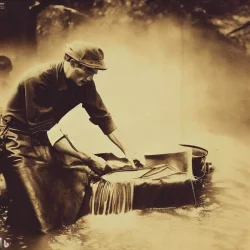
The hides are immersed in vats of water mixed with antiseptic (to prevent putrefaction) for several hours. Soaking removes dirt such as mud, blood, grease and other residues. It also removes the remains of the soluble substance added when the hides were salted to preserve them. This step has the unfortunate tendency to rigidify the leather.
The aim is to rehydrate the hides, so that they regain their softness. Once the soaking process is complete, the hides regain a level of hydration close to that which they had when they were fresh. Thanks to the swelling of the skin by the water and the mechanical action of the rotating paddles in the barrel, a large proportion of the hair attached to the epidermis will fall out.
Hair removal and peeling
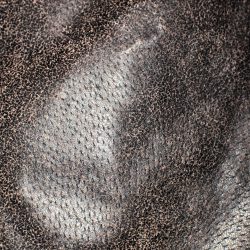
The skins are once again immersed in a rotating vat filled with an alkaline solution. The fibres are loosened and, thanks to the action of a specific liquid preparation, the keratin is dissolved, removing the last remaining hairs.
Next comes the peeling process, which consists of altering the skin fibres very slightly. This makes it more permeable and receptive to the tanning agents with which it will later come into contact. This stage also restores the leather’s softness and enhances the grain, in other words, the quality and overall appearance of the future leather.
Fleshing and rinsing
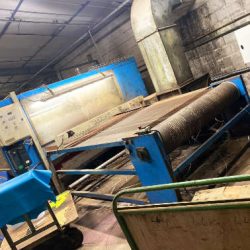
Each skin is individually passed through a scarner. This removes the subcutaneous tissue, but this time on the flesh side.
Finally, the skin is thoroughly rinsed and wrung out. This is the final stage.
At the end of this river work, all that remains of the original skin is the dermis, ready for tanning.
Did you know?
In the time of our ancestors, river work was traditionally carried out directly in the riverbed, which gives it its name. The megisserie of Mazamet, with which we work, is ideally located near the river Thoré. This river, with low limestone content, was perfectly suited to this process. Nowadays, these stages are carried out in large vats in their workshop. This development gives them optimum control over the process.
The different stages of vegetable tanning
Vegetable tannins
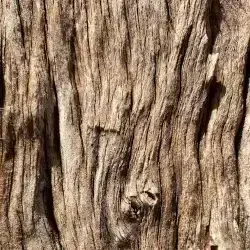
Each craftsman chooses vegetable tannins according to the species of animal treated, but also according to the properties he wants to give the leather (shine, softness …). Our partner tannery uses mainly québracho and mimosa bark.
Soaking hides
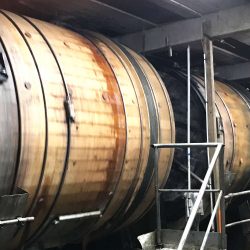
This stage involves immersing the hide in large circular vats called “tannery drums”. These contain the tannins that will penetrate the epidermal fibres to modify them in depth. Unlike industrial processes, soaking takes time. It takes anywhere from a few days to several months.
This age-old method produces fairly firm leathers, perfect for making club chairs and sofas . After this process, we can now talk about leather rather than hides. The resulting sheepskin is called basane.
The Corroyage
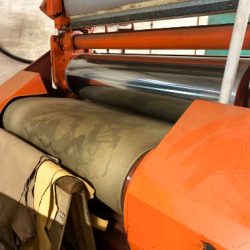
This stage is divided into several phases.
Spinning: carried out using a press or machines with felt cylinders. Under the effect of the pressure set by the tanner, the leather loses most of its water again.
Winding: the skins are hung for 24 to 48 hours to drain and dry. The leather becomes fairly rigid again.
Splitting: the leather is divided into two sheets. The bottom sheet, which was in contact with the flesh, is called the “leather crust”. The top sheet, on the outside, is the leather’s precious grain. This is a high-quality product that we use to make our club chairs and sofas.
Shaving: the skin is flattened to give it an even thickness, removing excess and unwanted parts.
Moistening: the skin is moistened to prepare it for the next stage.
Paddling: varying degrees of pressure are exerted on the leather, which is placed between two shaking rollers to soften the material that had lost its softness during the winding process.
Good to know
Our tannery respects the REACH standard. This certifies that the dyes and other products needed for tanning have been validated by the French and European safety authorities. In addition, it has its own water treatment plant and uses a wood-fired boiler to heat its buildings. These actions enable the tannery to limit its carbon footprint.
Leather finishing
To increase its softness and durability, the leather is nourished. All that remains is to finish it. These will depend on the intended use (furniture, leather goods, etc.), and the particular requirements of the leatherworker’s customers. Leather can also be dyed in a huge variety of colours. To achieve this, the leather is successively immersed in dye baths containing various dyes. The pigment content and the number of baths will depend on the colour and intensity you wish to give the leather. They are coloured evenly and to varying degrees of depth.
Depending on the final finish required, the leather may be given a satin finish, a smooth finish or even a grained finish. During the tanning process, the hide loses its original grain. To fix these effects, the piece of leather is placed in a press with smooth or engraved plates that are heated. These are then pressed against the leather to emboss the desired pattern. This can be wrinkles, designs in relief, or a crocodile look. This technique can be used to add a permanent artificial grain to the leather, as well as ornaments, pictograms or even written phrases. The possibilities are almost endless. The leatherworker has the power to modify the shine, colour, feel and even the relief of the leather that passes through his hands. The resulting basane is now ready to cover prestigious club sofas and club chairs.
And don’t forget, to keep your beautiful leather supple and shiny for a long time, remember to look after it with care!
